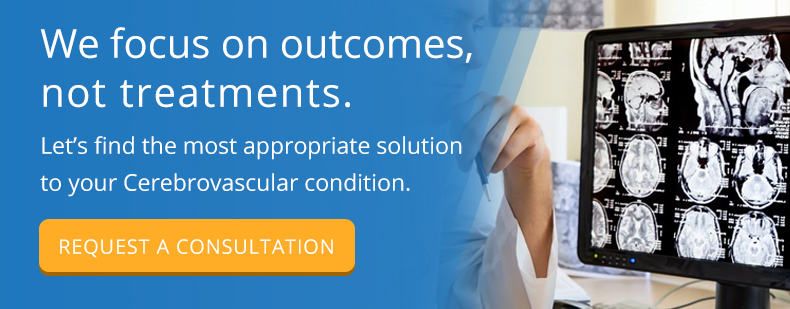Aneurysm coiling, also known as endovascular coiling, is a less invasive procedure for treating aneurysms that have the potential to rupture. Aneurysm coiling surgery usually involves a relatively short hospital stay and recovery time compared to more invasive surgical treatments, and being prepared for all stages of your aneurysm coiling procedure can help make your recovery go smoothly. Preparing for your aneurysm coiling surgery includes discussing potential allergies with your neurosurgeon, discussing possible medication adjustments with your GP/neurosurgeon and making post-op recovery arrangements with your friends or family.
What Is Aneurysm Coiling?
Aneurysm coiling is an alternative to conventional surgery for treating an aneurysm, a weakened area of an artery that bulges outward. Aneurysms can rupture, causing bleeding in the brain and stroke. In aneurysm coiling, doctors insert flexible platinum coils into an aneurysm through a catheter inserted through the large femoral artery in the groin. The coils fill the aneurysm and seal it, reducing or eliminating the risk of rupture.
Aneurysm coiling is performed in a hospital setting under general anesthesia. This procedure typically takes between 1.5 and 3 hours, but your preparations will most likely begin several days before your surgery date.
Preparing for Your Surgery
In the days before your procedure, you can expect to meet with your healthcare team to make arrangements for your hospital stay and to sign consent forms related to the procedure. You may be scheduled for imaging and blood tests as well.
Discuss Allergies With Your Surgeon
During this time, it’s essential to talk with your doctors about allergies you may have and medications you take. In order to view the aneurysm and direct the catheters accurately to the site, a contrast dye will be injected into the artery, so your doctors will want to know whether you have allergies to contrast dyes or iodine, or if you have kidney problems. You may also be asked if you have allergies or reactions to anesthetics or medications.
Discuss Medications With Your Neurosurgeon
Be sure to discuss any medications you take — including over the counter medicines, supplements and alternative remedies — with your healthcare team. If you take anticoagulants, or “blood thinners,” such as aspirin or warfarin, your doctor may ask you to stop taking them a day or so before surgery. You may also be asked to change your dose or dosing schedule for other medications, or even asked to take special medications for the procedure.
Make Recovery Arrangements
During this time, you may also want to make any necessary preparations for your hospital stay, such as arranging for someone to care for children, pets and your house. Make arrangements for time off from work or school, and pack a bag with essentials for at least a few days in the hospital.
Because aneurysm coiling usually involves general anesthesia, no eating or drinking is allowed for 6 to 8 hours before surgery. Talk with your doctor if you must take medications during that time.
The Day of Surgery
After you check in at the hospital, you can expect to be taken to a room where you will change into a hospital gown. An area in the groin may be shaved. In the operating room, you’ll be given anesthesia so that you will sleep through the procedure.
Guided by sophisticated imaging technology, your neurosurgeons will thread a catheter through the artery to the site of the aneurysm and put the coils in place. A stent might also be placed in the artery to help support the coils. Catheters are removed and the incision is sealed or stitched. After the procedure, you may be moved to a recovery room or an intensive care unit for monitoring — an important step if your surgery was done to repair a ruptured aneurysm.
From Hospital To Home
Depending on circumstances, a typical hospital stay for aneurysm coiling can range from one or two days for an unruptured aneurysm to a week or more if a ruptured aneurysm caused neurological problems. Make contingency arrangements for caring for your house and dependents in case you remain in the hospital longer than expected. When you are ready to leave the hospital, go over your discharge instructions thoroughly with your doctors and hospital staff, and make sure to have someone available to drive you home.
Without complications, recovery from an elective aneurysm coiling surgery typically takes one week. Although you can expect to return to most normal activities within a week or so, you may be advised not to lift heavy objects or strain, so you may want to arrange for someone to help out with daily tasks for the first few days after you return home.
You may be told not to drive for the first week after your procedure, so consider arranging alternative means of transportation for follow up appointments or other errands. During this time, work with your doctors to determine when you’re ready to return to work, school or other activities.
After surgery, your doctors will schedule follow-ups to monitor your healing and check for any neurological deficits. You may also be scheduled for imaging tests such as a cerebral angiogram or MRI to check the placement of the coils.
Aneurysm coiling surgery can resolve an aneurysm with no need for further treatment in 9 out of 10 patients. With the support of your healthcare team, planning and preparing for your procedure can make it easier to return to your daily life.


